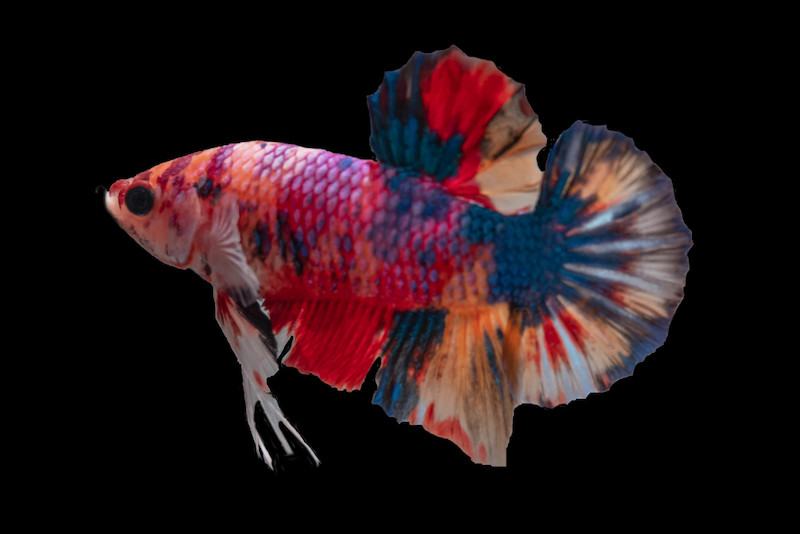When it comes to aquarium maintenance, one of the biggest concerns is the health of the fish.
While many things can go wrong, dropsy is one of the most serious ailments that can befall your fish. So, how long does dropsy take to kill a fish?
Read on for more information about this tricky condition.
What is Dropsy?
Dropsy is a symptom of disease in fish, not a specific condition itself. An enlargement of the body characterizes it due to fluid accumulation under the skin.
Dropsy causes can manifest from an infection, injury, or underlying illness.
Depending on the underlying cause, treatment can range from supportive care (i.e., antibiotics) to addressing environmental factors (i.e., adjusting water quality).
Unfortunately, dropsy can lead to death due to secondary infections and other health complications because the swim bladder is often affected when fluid accumulates in the tissues surrounding it – leading to difficulty maintaining buoyancy and orienting correctly in the aquarium’s current and orientation.
What Are the Signs of Dropsy?
The first sign of dropsy is usually a swollen belly, followed by faded colors, loss of appetite, and a decrease in swimming activity.
Additional symptoms may include discolored scales, raised scales that appear like pinecones, and protruding eyes. Dropsy can also lead to organ deterioration, ulcerative lesions on the skin, or internal bacterial infections over time.
In order to prevent the spread of infection throughout an aquarium, it is important to isolate any fish that display these symptoms so they can be treated immediately.
Depending on their severity, symptoms may take anywhere from days to weeks before leading to death or before they become apparent at all.
How to Treat Dropsy
As soon as signs of dropsy are noticed, it is very important to treat it immediately to prevent irreversible damage and the death of all other infected fish.
Treatment for dropsy includes:
- Maintaining good aquarium hygiene
- Changing the water regularly
- Medications to reduce inflammation
Some fish may even require veterinary attention if their condition is severe enough. With prompt intervention, it’s possible to reverse the effects of dropsy before they become fatal.
How to Prevent Dropsy
Aquarium owners should routinely inspect their fish for signs of illness to prevent dropsy, as early detection and treatment is key in preventing the disease from taking hold.
It is also important to create a clean and healthy environment so that the fish’s innate immunity can properly combat potential threats. The following steps should be taken to prevent outbreaks of dropsy in aquariums:
Perform Regular Water Changes
Tanks should be cleaned at least once a week to reduce the amount of organic build-up, which can cause an unhealthy environment for the fish. This removes any toxic substances from the water, which could lead to a greater chance of infection.
Keep Water Conditions Stable
It is essential to continually monitor for poor water quality by testing nitrates, nitrites, ammonia, and pH levels. The quality of your water directly affects your fish’s health. An imbalance in certain parameters could put your fish at risk for infection or disease.
Quarantine New Arrivals
Fish caught in the wild can often carry parasites or certain diseases that are not visible until they have been introduced into your tank; therefore, quarantine all new specimens before adding them to your main tank. This will give you time to observe their behavior and health before allowing them to join other community members.
Maintain Appropriate Diet & Nutrition
One of the most straightforward strategies for prevention is providing adequate nutrition; providing high-quality foods with essential nutrients helps boost general immunity and reduces stress levels, both proven factors in improved overall health for aquarium fish.
Implement Preventative Treatment
It might be wise to add a bit of anti-parasitic medication into each routine water change after removing ‘dirty’ filters or gravel, as this will guard against potential secondary cause/carrier sources coming into contact with fish (i.e., parasites).
How Long Does Dropsy Take to Kill a Fish?
Death can take days to weeks for fish suffering from dropsy due to the secondary effects of the damage and inability to feed.
As dropsy is caused by bacteria and organisms that weaken the fish’s immune system, it will eventually succumb to starvation or other related diseases if it cannot be treated in time.
The length of time it takes for a fish with dropsy to die depends on many factors, including the type and strength of the pathogen, the age of the fish, and its overall health condition before contracting dropsy.
The only way to accurately gauge how long it will take for your tank mates to die from dropsy is through hands-on observation and diagnosis with an aquarium professional.
Final Thoughts
When a fish exhibits signs of dropsy, you need to act quickly to ensure the best chances of survival. Dropsy can be treated with antibiotics and a proper diet if caught in its early stages. Some cases, however, may prove too late and result in the infected fish’s death.
If you’re looking for more tips on maintaining healthy fish, check out some of our helpful blogs.

